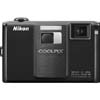
Facing the stars - the Canon EOS 60Da has been released
Canon has expanded the EOS product line with the newly released EOS 60Da, a high-resolution digital SLR (DSLR) camera specifically designed for astronomical photography.

Based on the EOS 60D specification, replacing the EOS 20Da model, the EOS 60Da is specifically designed to capture the rich reds of emission nebulae with its modified low-pass filter that is more sensitive to light around the hydrogen alpha (Hα) wavelength.
The EOS 60Da is an ideal tool for photographing astronomical phenomena such as emission nebulae - these are the favorites of astrophotographers due to their characteristic red color caused by hydrogen ionization. In a standard DSLR, an infrared (IR) filter limits the amount of Hα light that falls on the camera's sensor, reducing the transmission of red signals and preventing unwanted color distortion from appearing in the final image. However, the new modified filter on the EOS 60Da is three times as transparent to Hα light as the EOS 60D. This, along with a combination of an 18-megapixel CMOS sensor, DIGIC 4 image processing and a wide ISO range, ensures clear, sharp images of emission fogs.
High resolution, high sensitivity and low noise
The EOS 60Da pampers astrophotographers with excellent performance and flexibility for creativity. The 18-megapixel APS-C CMOS sensor is ideal for capturing the rich details of stellar clusters, and the enhanced performance at high sensitivity (automatically up to ISO 6400, manually expandable to ISO 12800) guarantees low image noise, eliminating the need for long exposures or clocks ( star tracking equipment). The high-performance 14-bit DIGIC 4 processing sensor provides excellent signal-to-noise ratio in the final data output, resulting in natural-color, fine-toned images - ideal for capturing subtle interstellar nebulae gradients, for example.
Easy to use
Utilizing the EOS 60D's further polished ergonomics, the EOS 60Da is designed to be comfortable to hold and versatile to suit individual needs. The curved-shaped machine was given buttons with an easily accessible layout; frequently used controls have been grouped for easier operation. The controls can be easily adjusted and even redistributed as needed to suit the individual needs of each user. The top, backlit LCD display provides additional flexibility in monitoring image parameters and adjusting them as needed during shooting. A separate Quick Control button provides instant, convenient access to all camera settings while shooting.
The EOS 60Da has a 7,7 cm (3,0 ”) wide, foldable and rotatable (adjustable tilt) LCD display that can also be used in Live View mode - ideal for composing shots from a tripod. The display can be folded out and rotated on the hinge for more flexibility, and the Live View mode allows convenient, precise control, fine-tuning of composition and camera settings. The LCD screen’s 1,04-megapixel resolution displays images in exceptional detail during and after shooting, allowing astrophotographers to confidently compose and check their photographs.
For even more flexible shooting, the EOS 60Da is compatible with the optional TC-80N3 self-timer remote control - a programmable remote control that lets you change settings without moving the camera. With the TC-80N3, you can take pictures remotely at freely adjustable intervals or take long-shutter exposures - the ideal tool for “time lapse” videos of the night sky. With the included ACK-E6 AC Adapter, you can shoot continuously from AC power - ideal for long exposures - and use the EOS Utility software to change settings or view the composite image from a PC or Macr while shooting.
Given that the EOS 60Da is part of the EOS system, it is compatible with the world's largest family of single-mount lenses with focal lengths from 8 to 800 millimeters - providing great performance and an exceptional creative choice for astrophotographers.
EOS 60Da - the most important features:
- Increased sensitivity to infrared light
- 18 megapixel APS-C CMOS sensor
- Adjustable tilt 7,7 cm (3,0 ”) 3: 2 Clear View LCD
- ISO 100-6400 (expandable to ISO 12800)
- “Time-lapse” shots with the EOS Utility utility
Source: Press release

















